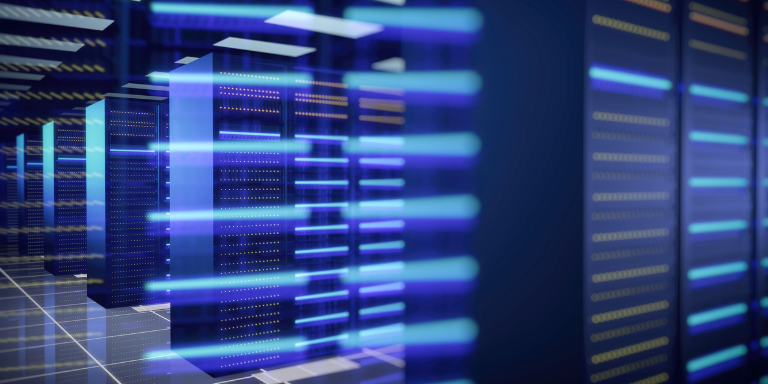With Generative AI becoming the cornerstone of innovation and competitiveness, data modernization is no longer a peripheral concern, it’s a core business necessity. Legacy code, often running into thousands of lines, can act as a significant barrier to flourishing in a cloud-centric environment. Fortunately, data modernization tools are rapidly evolving, offering solutions for efficient and accurate conversion of legacy systems. These tools address the inherent complexity and scalability challenges head-on.
Furthermore, the demand for data-driven decision-making is accelerating. This is driven by the growing adoption of AI across various business functions, coupled with increasing pressure from business needs, regulations, and compliance requirements.
Leading the Way: Modern Data Management Platforms
Recognizing this shift, industry leaders like Microsoft, AWS, Informatica, Snowflake, and Databricks are developing integrated data management platforms. These platforms streamline data integration, warehousing, analytics, and AI, paving the way for a comprehensive data modernization strategy for your organization.
Aligning with Industry Growth for Optimal Results
The big data and business analytics market is projected to reach a staggering $684.12 billion by 2030. Aligning your data modernization efforts with these industry trends is crucial to unlocking the full potential of data quality and enabling confident, informed decision-making.
What is data modernization?
Data Modernization is the transformative process aimed at upgrading an organization’s data infrastructure to align with the latest technologies and meet the evolving demands of a complex digital landscape. This strategic overhaul encompasses several key aspects:
- Enhancing Data Management Practices: At its core, data modernization involves adopting advanced tools and methodologies to efficiently collect, process, and analyze vast volumes of data. This step is crucial for organizations aiming to leverage data for strategic decision-making.
- Prioritizing Data Governance: A significant component of data modernization is ensuring robust data governance to treat data as an asset. This involves responsible and ethical handling of data, which is pivotal in maintaining trust and compliance.
- Unlocking Insights from Unstructured Data: With a considerable portion of today’s data being unstructured, data modernization leverages advanced analytics and AI to extract valuable insights. This capability enables businesses to gain a competitive edge by better understanding consumer behaviour and market trends.
Key Data Modernization Trends
#1 Operational data warehouses
Operational data warehouses have been gaining significant popularity in recent years. This emerging trend is driven by the need for organizations to have real-time access to their data for operational decision-making. Traditionally, data warehouses were primarily used for analytical purposes, providing a consolidated view of historical data for reporting and analysis. However, with the increasing demand for real-time insights, organizations are now looking to leverage their data warehouses for operational purposes as well.
Operational data warehouses are designed to handle large volumes of data and support high-speed data processing. They enable organizations to capture, store, and analyze data from various sources in real-time, allowing for faster decision-making and improved operational efficiency. One of the key advantages of operational data warehouses is their ability to integrate data from multiple systems and sources. This allows organizations to have a unified view of their data, enabling them to make more informed decisions and take immediate action.
In data modernization, the operational data warehouse (ODW) has emerged as a pivotal component, driven by several key advancements:
- Cloud-based Data Warehouses: The shift towards cloud-based solutions is largely due to their scalability, cost-efficiency, and performance enhancements. This transition is supported by the increased adoption of platforms like Amazon Web Services (Redshift), Google Cloud (BigQuery), and Microsoft (Azure Synapse Analytics), which provide scalable, flexible pricing options and improved data performance and availability.
- Real-time Data Warehousing and Automation: Modern ODWs leverage real-time data warehousing for immediate insights, facilitated by technologies such as Apache Kafka and Amazon Kinesis for stream processing, and SAP HANA for in-memory computing. Automation further streamlines data integration and management, introducing AI and machine learning for enhanced data quality and governance. These innovations support automated governance, self-healing systems, and the operationalization of insights, transforming data warehousing operations.
- Data Warehouse as a Service (DWaaS): DWaaS models like Data Warehouse as a Service offer a fully managed, cloud-based solution that delivers agility, flexibility, and cost-effectiveness. This model is particularly attractive for small and medium-sized businesses due to its low maintenance and streamlined approach to data warehousing, allowing businesses to avoid initial hardware expenses and maintenance costs while enjoying performance improvements and scalability. Solutions like Snowflake and AWS Redshift Spectrum provide fully managed, cloud-based data warehousing services, offering agility and cost-effectiveness without the need for significant hardware investment.
As organizations generate more data and require faster processing speeds, these warehouses can easily scale up to meet the growing demands.
#2 Metadata-Driven Architecture in Data Engineering
The ever-growing volume and complexity of data pose significant challenges for organizations seeking to leverage its full potential. Data engineering teams, in particular, grapple with the inefficiency and errors that arise from poorly understood data landscapes. Metadata-Driven Architecture (MDA) emerges as a powerful solution, offering a structured approach to data management that empowers efficient workflows and informed decision-making.
MDA centres around the comprehensive management and utilization of metadata, which is information about data. This encompasses three key categories:
- Technical Metadata: Provides a detailed understanding of the data structure, including data types, schemas, and storage formats. It essentially acts as a blueprint for how your data is organized.
- Operational Metadata: Sheds light on the data’s lifecycle, capturing information about its origin, transformations, and usage history. It allows you to track the journey of your data from source to destination.
- Business Metadata: Bridges the gap between data and business context. This includes information on ownership, sensitivity levels, and clear business definitions. It ensures everyone understands the meaning and significance of each data asset.
#3 Real-time data streaming
Real-time data streaming is transforming the landscape of data modernization, offering immediate insights for swift decision-making and enhancing AI model training with its capability to handle rapid data generation. Here’s how it’s set to change the game in 2024:
- Serverless Stream Processing: Simplifies the creation and management of streaming applications by utilizing cloud-based platforms, making real-time data processing more accessible to businesses without the need for extensive technical expertise. Tools like AWS Kinesis, Azure Stream Analytics, and Google Cloud Dataflow simplify the creation and management of streaming applications.
- Cloud-Agnostic Streaming Solutions: With businesses increasingly using multiple cloud platforms, the demand for streaming solutions that offer seamless integration across various cloud environments is on the rise. This ensures that organizations can leverage real-time data streaming regardless of their chosen cloud service provider. Apache Kafka and Confluent Platform offer solutions that integrate seamlessly across various cloud environments.
- Advancements in Real-Time Analytics:
- Integration with AI Services: Real-time data is crucial for training AI models, performing real-time model scoring, and integrating with AI services like LLMs and SaaS offerings, driving forward the capabilities of AI-first enterprises.
- Accessible and User-Friendly Technologies: Efforts to make streaming technologies more accessible and user-friendly will empower businesses of all sizes to leverage the power of real-time data without needing in-depth technical knowledge.
- Standardization and Interoperability: The push for standardizing streaming technologies and protocols aims to improve interoperability between different solutions, facilitating smoother data streaming processes and integration with business applications in real-time.
#4 Edge Computing
The adoption of edge computing is on the rise due to its ability to provide faster data speed responses and reduce latency. Additionally, edge computing brings the data closer to the end user or the company generating the data. This growing popularity can also be attributed to the cost-effectiveness of edge computing compared to the soaring prices and subscriptions of cloud computing. With edge computing, data is processed in real-time without the need to connect to a cloud server. By storing data closer to its source, edge computing eliminates the need for data to travel long distances to connect with company servers, which would have been the case if it were stored in a remote data centre. This not only reduces the energy consumption in transferring data but also in maintaining the environment, making edge computing a more energy-efficient alternative to permanent data centres. Analysts predict a significant rise in edge computing through 2030, driven by the growth of AI and IoT.
The edge computing market is projected to reach over $139 billion by 2030. AI continues to play a crucial role in transforming various industries, making operations more efficient and intelligent. The convergence of Information Technology (IT) and Operational Technology (OT) is driving the shift towards Industry 4.0, where edge computing’s role becomes increasingly vital. By enabling real-time data processing without relying on a cloud server, edge computing not only consumes less energy but also significantly reduces the carbon footprint of data centres. AI further enhances this synergy by monitoring and reducing energy consumption through predictive analytics and automated management tasks. This collaboration between AI and edge computing goes beyond the deployment of new technology. It leverages data analysis to transform edge computing into a decentralized network that supports new data-intensive and ultra-low latency applications.
#5 Data Security and Governance
As data continues to be the lifeblood of modern businesses, the focus on data security and governance is sharper than ever. The data governance market is projected to balloon at a staggering 18.5% CAGR between 2020 and 2024, reflecting the growing need for robust data control. By 2024, a whopping 60% of large organizations are expected to leverage AI in their security strategies, compared to a mere 10% in 2019.
Data modernization is a transformative process that often includes migrating data to the cloud and adopting new data architectures. However, to ensure a smooth and secure transition, strong data governance practices are essential. This involves implementing access controls, data classification systems, and clear ownership structures to effectively manage data in these new environments. By prioritizing data governance, organizations can confidently embrace data modernization and unlock its full potential. In the realm of modern data pipelines, AI security plays a crucial role in protecting valuable data. With complex workflows that involve data movement across multiple systems, traditional security solutions may struggle to keep up. This is where AI-powered security comes in.
Tools such as Microsoft Azure Sentinel, IBM QRadar, and AWS GuardDuty enhance security by leveraging AI to monitor and protect data pipelines. By analyzing data flow patterns and detecting anomalies in real-time, AI security safeguards modernized data pipelines from breaches and unauthorized access. This symbiotic relationship between data modernization and AI security ensures that organizations can leverage the benefits of agile and efficient data analysis while mitigating security risks and compliance concerns.
#6 Convergence of Data Lakes and Data Warehouses
The convergence of data lakes and data warehouses is a significant trend in data modernization that is expected to continue shaping the landscape in 2024. Traditionally, data lakes and data warehouses have served distinct purposes in data management. Data lakes have been the go-to solution for storing vast amounts of raw and unstructured data, while data warehouses have focused on structured data and providing a structured and organized view of the data for analysis. However, as organizations strive for a more holistic and unified approach to data management, the convergence of these two technologies is becoming increasingly prevalent. This convergence brings together the strengths of both data lakes and data warehouses, enabling organizations to leverage the power of both structured and unstructured data in a unified environment.
By integrating data lakes and data warehouses, organizations can now store and process diverse data types, including structured, semi-structured, and unstructured data, in a single platform. This not only simplifies data management but also enhances data accessibility and analysis capabilities. With this convergence, organizations can unlock valuable insights from their data, regardless of its format, leading to more informed decision-making and driving innovation in various industries. Technologies such as Databricks Lakehouse Platform and Google BigLake integrate data lakes and warehouses, providing a unified approach to data management.
As data modernization trends continue to evolve in 2024, the convergence of data lakes and data warehouses will play a pivotal role in enabling organizations to harness the full potential of their data assets.
#7 Hyperscale data centres
The hyperscale data centre market is projected to grow at a CAGR of 5.92% from 2023 to 2028, with the number of these facilities expected to surpass 700 by 2024. While massive hyperscale data centres, boasting over 5,000 servers, are the domain of tech giants like AWS and Google, existing data centres can also be optimized for efficiency. Here’s how:
Instead of constructing new facilities, data centres can undergo strategic upgrades to increase storage and power capabilities. This involves utilizing high-density server racks that pack more servers into a smaller space, optimizing storage capacity. Additionally, upgrading to high-performance processors and servers provides a performance boost while extending the lifespan of existing data centres.
Data centres are known for their high energy consumption. However, leading companies are adopting sustainable practices to minimize their environmental impact. Recycling older equipment plays a crucial role by recovering valuable materials to produce new servers, reducing reliance on raw materials. Furthermore, companies are exploring alternative energy sources like lithium-ion battery backups for uninterruptible power supplies, nuclear energy, and even natural gas, all with a lower carbon footprint compared to traditional fossil fuels.
#8 DataOps & MLOps
In the age of big data and AI, efficiency is paramount. DataOps and MLOps, two methodologies gaining significant traction in 2024, address this very need by emphasizing collaboration, automation, and continuous integration within data and machine learning workflows. The MLOps market is projected to reach USD 75.42 Billion by 2033, growing at a CAGR of 43.2% from 2024 to 2033. These approaches lead to faster development cycles, ensuring reliable, scalable, and efficient deployment of AI and machine learning models in production environments.
DataOps fosters collaboration between data engineers, data scientists, and other stakeholders. It automates data pipelines and ensures continuous integration and delivery (CI/CD) for data, laying the groundwork for building and deploying robust machine learning models. MLOps builds upon this foundation, streamlining the entire machine learning lifecycle – from development and testing to deployment and monitoring. By automating repetitive tasks and integrating tools for version control, experiment tracking, and model monitoring, MLOps empowers teams to deliver high-performing models to production faster and with greater reliability.
Technologies such as Apache Airflow, DataRobot, and Airflow offer advanced capabilities for data pipeline automation and orchestration. Also, tools like MLflow, TensorFlow Extended (TFX), and Azure ML are crucial for managing the end-to-end lifecycle of machine learning models.
By leveraging DataOps and MLOps together, organizations unlock the full potential of their data. They gain access to real-time insights, make data-driven decisions with confidence, and ultimately gain a significant competitive edge in the data-driven landscape of 2024.
The evolving trends in data modernization underscore the necessity of modernizing data infrastructure and spotlight the potential for unprecedented levels of strategic decision-making and operational agility. By embracing these trends, organizations can not only meet but exceed the demands of the modern digital landscape, ensuring sustained growth and competitive advantage.
About Author
Ansuman Palit
Head – Database Practice and Service Delivery
Ansuman, with over 20 years in IT, possesses outstanding database expertise in SAP Sybase/MSSQL, modeling, and architecture. His adept leadership in troubleshooting and guiding teams through transitions to new solutions, alongside his motivational skills, makes him an invaluable asset, fostering innovation and excellence among team members.



